6 Advanced Ancient Inventions Beyond Modern Understanding
By Tara MacIsaac, Epoch Times
We’ve lost the secret to making some of history’s most useful inventions, and for all of our ingenuity and discoveries, our ancestors of thousands of years ago are still able to baffle us with their ingenuity and discoveries. We have developed the modern equivalent of some of these inventions, but only very recently.
- Researchers discover secret recipe of Roman concrete that allowed it to endure for over 2,000 years
- Scientists Discover that Ancient Roman Concrete was Far Superior to Our Own
1. Greek Fire: Mysterious Chemical Weapon
The Byzantines of the 7th to 12th centuries hurled a mysterious substance at their enemies in naval battle. This liquid, shot through tubes or siphons, burned in water and could only be extinguished with vinegar, sand, and urine. We still don’t know what this chemical weapon, known as Greek fire, was made of. The Byzantines guarded the secret jealously, ensuring only a select few knew the secret, and the knowledge was eventually lost altogether.

Image from an illuminated manuscript, the Madrid Skylitzes, showing Greek fire in use against the fleet of the rebel Thomas the Slav. The caption above the left ship reads, “The fleet of the Romans setting ablaze the fleet of the enemies.” (Public Domain)
2. Flexible Glass: A Substance Too Precious
Three ancient accounts of a substance known as vitrum flexile, flexible glass, are not clear enough to determine that this substance actually existed. The story of its invention was first told by Petronius (63 AD).
- Ancient Marvels: Ten Amazing Inventions Created Before Their Time
- 1,700-Year-Old Evidence of Chemical Warfare
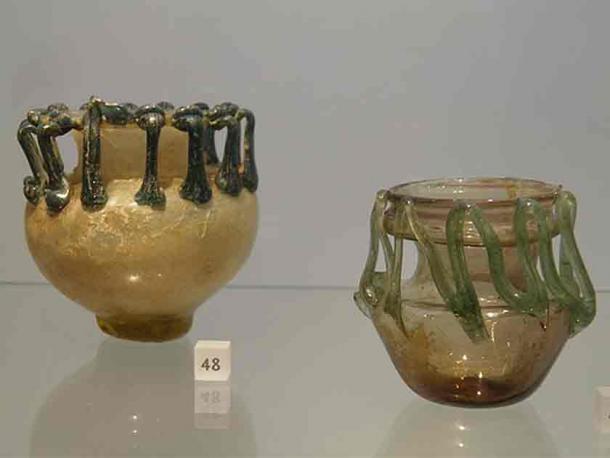
Roman Glass. (Carole Raddato/CC BY-SA 2.0)
He wrote about a glassmaker who presented the Emperor Tiberius (who reigned 14–37 AD) with a glass vessel. He asked the emperor to hand it back to him, at which point, the glassmaker threw it to the floor. It didn’t break; it only dented, and the glassmaker hammered it quickly back into shape. Fearing the devaluation of precious metals, Tiberius ordered the inventor beheaded so the secret of vitrum flexile would die with him.
Pliny the Elder (79 AD) told this story as well. He said that, although the story was frequently told, it may not be entirely true. The version told a couple of hundred years later by Dio Cassius morphed the glassmaker into a sort of magician. When the vessel was thrown to the floor, it broke and the glassmaker fixed it with his bare hands.
In 2012, the glass manufacturing company Corning introduced its flexible “Willow Glass.” Heat-resistant and flexible enough to be rolled up, it has proven especially useful in making solar panels.
If the unfortunate Roman glassmaker did indeed invent vitrum flexile, it seems he was thousands of years ahead of his time.
3. An Antidote to All Poisons
A so-called “universal antidote” against all poisons was said to have been developed by King Mithridates VI of Pontus (who reigned 120–63 BC) and perfected by Emperor Nero’s personal physician. The original formula was lost, explained Adrienne Mayor, a folklorist and historian of science at Stanford University, in a 2008 paper, titled “Greek Fire, Poison Arrows & Scorpion Bombs: Biological and Chemical Warfare in the Ancient World.” But ancient historians told us that among its ingredients were opium, chopped vipers, and a combination of small doses of poisons and their antidotes.
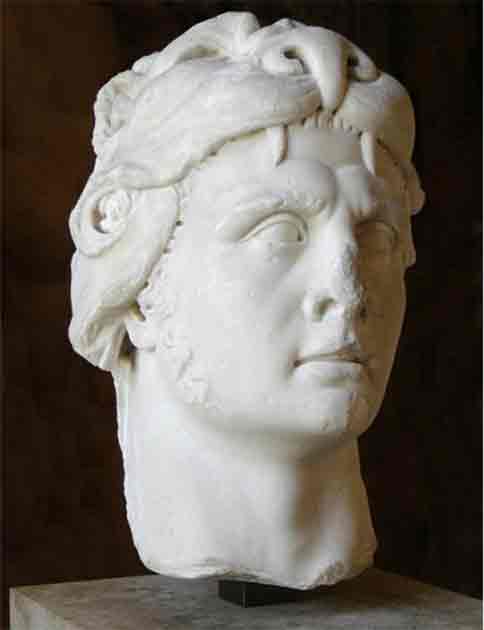
A depiction of King Mithridates VI of Pontus. (Sting/CC BY-SA 2.5)
The valuable substance was known as Mithridatium, named for King Mithridates VI.
Mayor noted that Serguei Popov, a former top biological weapons researcher in the Soviet Union’s massive Biopreparat program who defected to the United States in 1992, was attempting to make a modern-day Mithridatium.
4. Heat-Ray Weapon
Greek mathematician Archimedes (212 BC) developed a heat-ray weapon that defied the skills of Discovery Channel’s “Mythbusters”. Mayor described the weapon as “ranks of polished bronze shields reflecting the sun’s rays at enemy ships.”
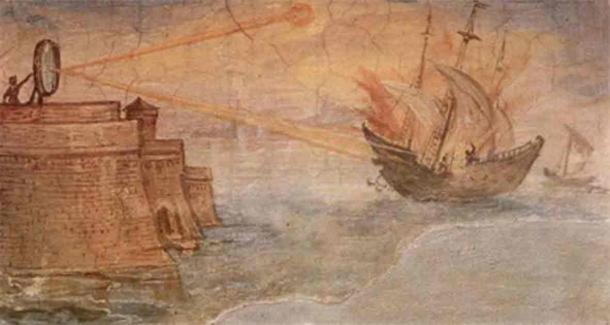
A depiction of how Archimedes set on fire the Roman ships before Syracuse with the help of parabolic mirrors. (Public Domain)
Although “Mythbusters” failed to reproduce this ancient weapon and declared it a myth, MIT students succeeded in 2005. They combusted a boat in San Francisco harbor using the 2,200-year-old weapon.
A heat-ray weapon unveiled in 2001 by the Defense Advanced Research Projects Agency (DARPA) used microwaves to penetrate “a victim’s skin, heating it to 130 degrees Fahrenheit (54.44 degrees Celsius), creating the sensation that one is on fire,” explained Mayor.
5. Roman Concrete
The vast Roman structures that have lasted thousands of years are testaments to the advantages Roman concrete has over the concrete used nowadays, which shows signs of degradation after 50 years.
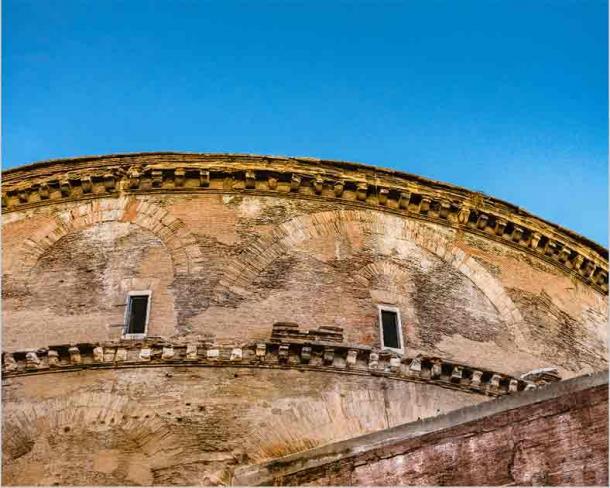
Roman concrete was used to construct the magnificent pantheon, which has endured for two millennia. (danflcreativo/Adobe Stock)
Researchers have worked in recent years to uncover the secret of this ancient concrete’s longevity. The secret ingredient is volcanic ash.
An article published in 2013 by the University of California–Berkeley News Center announced that university researchers described for the first time how the extraordinarily stable compound calcium-aluminum-silicate-hydrate (C-A-S-H) binds the material. The process of making it would create lower carbon dioxide emissions than the process for making modern concrete. Some disadvantages of its use are, however, that it takes longer to dry, and although it lasts longer, it is weaker than modern concrete.
6. Damascus Steel
In medieval times, swords made of a substance called Damascus steel were being produced in the Middle East out of a raw material, known as Wootz steel, from Asia. It was perplexingly strong. It wasn’t until the Industrial Revolution that metal so strong would be forged again.
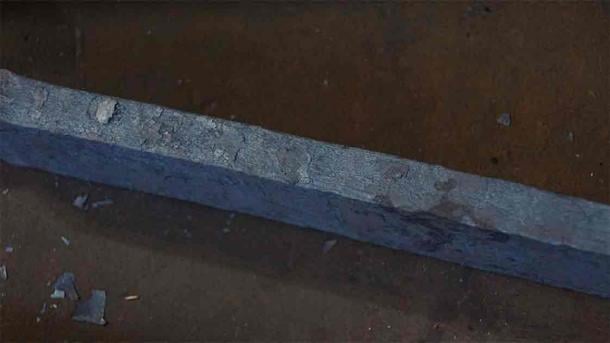
A sword made of Damascus steel. (NearEMPTiness/ CC BY-SA 3.0)
The secret of making the Middle East’s Damascus Steel has only reemerged under the inspection of scanning electron microscopes in modern laboratories. It was first used around 300 BC and the knowledge seems to have been inexplicably lost around the mid-18th century.
Nanotechnology was involved in the production of Damascus steel, in the sense that materials were added during the steel’s production to create chemical reactions at the quantum level, explained archaeology expert K. Kris Hirst in an article written for About Education. It was a kind of alchemy.
Hirst cited a study led by Peter Paufler at the University of Dresden and published in the journal Nature in 2006. Paufler and his team hypothesized that the natural properties of the source material from Asia (the Wootz steel), when combined with materials added during the production process in the Middle East, caused a reaction: “The metal developed a microstructure called ‘carbide nanotubes,’ extremely hard tubes of carbon that are expressed on the surface and create the blade’s hardness,” Hirst explained.
Materials added during the production of Damascus steel included Cassia auriculata bark, milkweed, vanadium, chromium, manganese, cobalt, nickel, and some rare elements, traces of which presumably came from the mines in India.
Hirst wrote, “What happened in the mid-18th century was that the chemical makeup of the raw material altered—the minute quantities of one or more of the minerals disappeared, perhaps because the particular lode was exhausted.”
The article ‘6 Advanced Ancient Inventions Beyond Modern Understanding’ was originally published on The Epoch Time and has been republished with permission.
Top image: Advanced Ancient Inventions. Source: danflcreativo/Adobe Stock, Public Domain, Public Domain, NearEMPTiness/ CC BY-SA 3.0)
















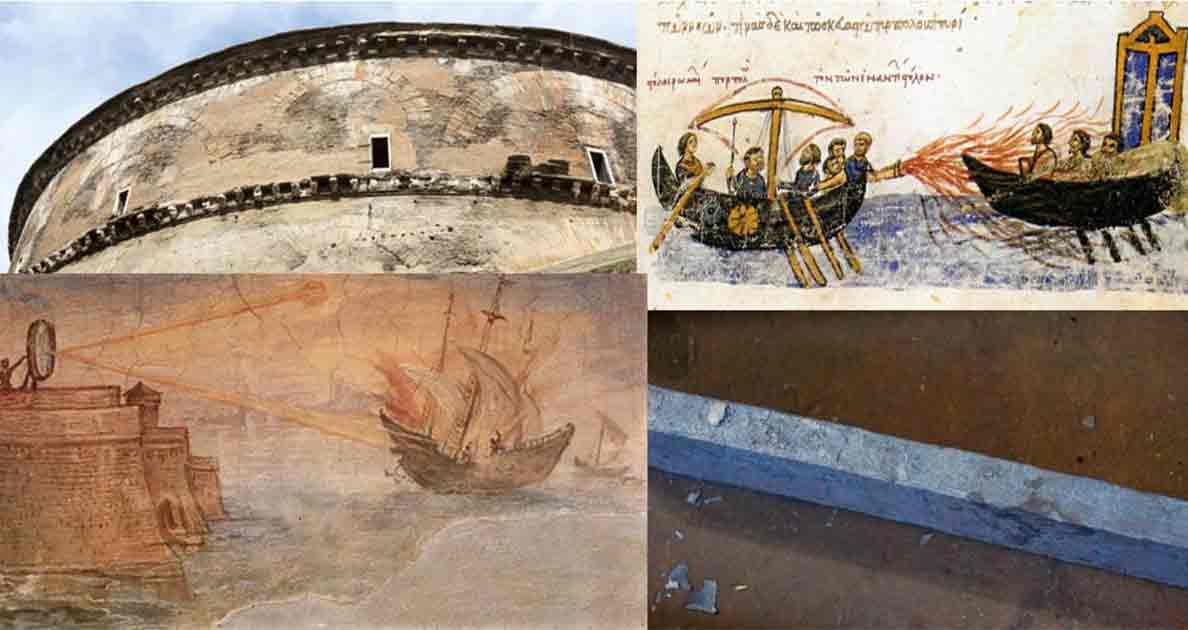
Comments
I have studied the Cart Ruts in Malta for years. I was surprised to find out recently that they are found on The Azores too. Are they located in any other countries I wonder? More research is needed as to their age and the rocks they are found in... are they yet another piece of evidence to support an incredible global civilization pre the Younger Dryas?
Look to the Sun and all your shadows shall fall behind you! X
Capitalism has “literally” lifted billions of humans out of abject poverty, name another system that has accomplished that?
I’m afraid this is one of the myths attached to Archimedes. The story doesn’t appear until centuries after his death. The concept is that the sun’s rays are focused on a tiney spot creating a localised rise in temperature. However as the ships move toward or away from the focal point the heat is dissipated over a broader and broader area.
Stop calling it Damascus Steel... Initial outdated Western sources called it Damascus cause that was the capital of the Caliphates and their elites use it in their conquests of somesort of holy land idk...But the Arabs, Persians, Afghans, Turk-Mongols Chinese all got it from India which is referred to as Wootz steel so just call it WOOTZ. Stop perpetuating the antiquated use of Damascus you illiterate clown.
Well, it may be a good thing that Greek Fire was lost; else we might not be here right now...
malisa wright
Pages